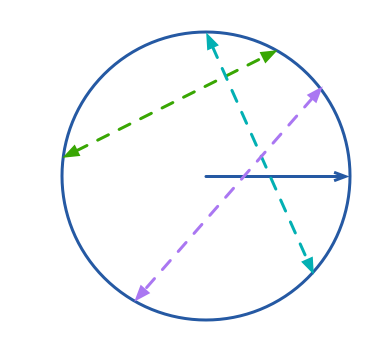Depends On The Circle, Right?

True or false?
The length of the largest chord possible in a circle is always equal to twice its radius .
This section requires Javascript.
You are seeing this because something didn't load right. We suggest you, (a) try
refreshing the page, (b) enabling javascript if it is disabled on your browser and,
finally, (c)
loading the
non-javascript version of this page
. We're sorry about the hassle.
It is indeed true that the length of the largest chord possible in a circle is always equal to twice its radius.
PROOF:
Let a circle with center O have a chord A B . Join O A and O B . P is a point on A B such that O P ⊥ A B .
We know that the perpendicular from the centre of a circle to a chord bisects the chord. Then P A = P B = 2 1 A B .
Let the radius = r , chord AB length = c and perpendicular distance between centre and the chord A B = x .
Now by Pythagorean theorem , in △ O P A ,
O A 2 = O P 2 + A P 2 .
r 2 = x 2 + ( 2 c ) 2 .
By making c the subject of he formula, c = 2 r 2 − x 2 .
So, we need to find the maximum possible value of c , right? We know that a function is maximized when its derivative is equal to zero. Then, since radius r is constant, c is maximum when:
d x d c ⇒ d x d ( 2 r 2 − x 2 ) ⇒ 2 d x d ( r 2 − x 2 ) ⇒ 2 ( r 2 − x 2 x ) ⇒ x = = = = = 0 0 0 0 0
Then, c is maximum when x = 0 . Then clearly the maximum value of c is:
c = 2 r 2 − 0 2 = 2 r 2 = 2 r = 2 × radius .